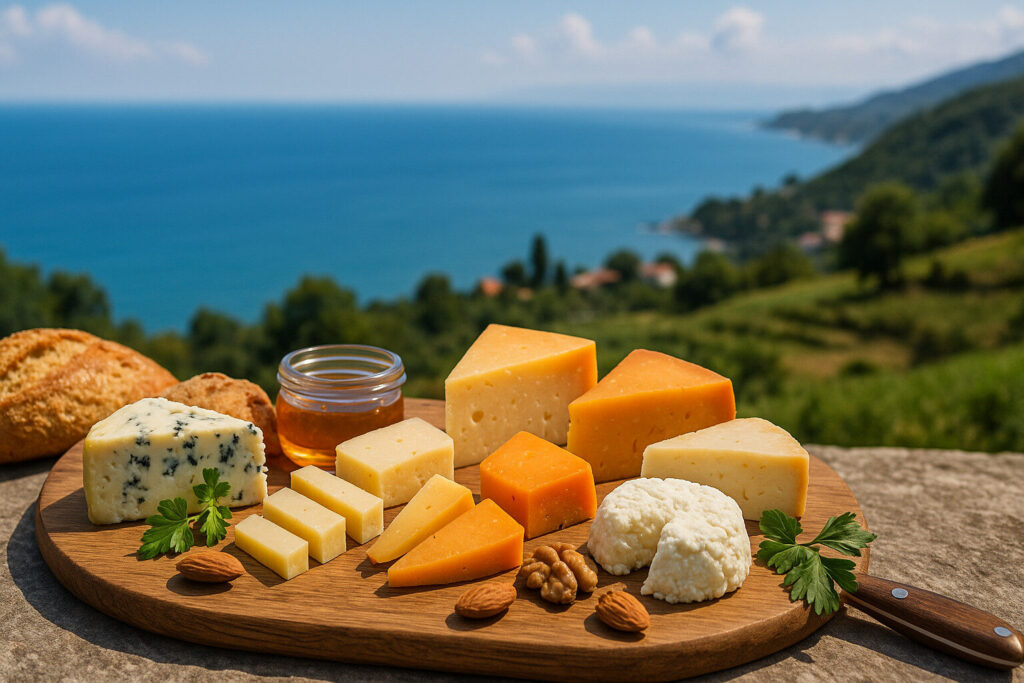Cheese Of Caspian Region
Definition and Scope
Cheese of the Caspian Region refers to dairy products originating from countries bordering the Caspian Sea, including Iran, Azerbaijan, Russia, Kazakhstan, and Turkmenistan. These cheeses are often made from sheep’s, goat’s, or cow’s milk, reflecting the pastoral traditions of the area. They encompass a range of styles from brined varieties to aged and fresh cheeses, each tied to local customs and consumption habits.
The scope includes both widely recognized types like Iranian Lighvan and lesser-known artisanal cheeses from rural communities. Many are protected by geographical indications, emphasizing their connection to specific terroirs and production methods. This category highlights the diversity within a relatively compact geographic zone, showcasing unique adaptations to climate and culture.
Production Techniques
Traditional production often involves raw milk, which is curdled using animal rennet or plant-based coagulants native to the region. The curds are typically hand-ladled into molds and pressed lightly to retain moisture. Brining is a common step, with cheeses submerged in saltwater solutions for periods ranging from days to months, which develops their characteristic texture and preservation.
Some varieties undergo a ripening process in cool, humid caves or cellars, allowing natural molds and yeasts to contribute to flavor development. Aging times vary significantly, from fresh cheeses consumed within weeks to hard, aged types maturing over a year. Artisanal methods prioritize small-batch production, maintaining consistency through generational knowledge rather than industrial standardization.
Sensory Profile
Flavors range from tangy and salty in brined cheeses to earthy and pungent in aged versions, often with a pronounced lactic sharpness. Aromas may include notes of yogurt, grass, or wild herbs, influenced by the diverse flora of the Caspian pastures. Textures are equally varied, spanning from crumbly and dense to semi-soft and elastic, depending on moisture content and aging.
Many cheeses exhibit a slight acidity and mineral undertones, reflecting the soil and water composition of their origin. The rinds, when present, can be natural, washed, or oil-rubbed, contributing additional complexity. Overall, the sensory characteristics are robust and distinctive, making them easily identifiable among global cheese varieties.
Culinary Uses
These cheeses are integral to regional cuisines, often served as table cheeses alongside flatbreads, fresh herbs, and walnuts. They are commonly grated or crumbled over dishes like kebabs, stews, and rice pilafs to add salinity and richness. In Azerbaijan and Iran, they feature prominently in breakfast spreads, paired with tea and seasonal fruits.
Brined varieties are frequently used in baking, melting into savory pastries such as Azerbaijani kutab or Iranian sangak sandwiches. Their robust flavors make them suitable for grilling or frying, creating a crispy exterior while maintaining a soft interior. They also appear in salads and mezze platters, providing a contrasting element to sweet or acidic components.
Regional Examples
Iran produces Lighvan, a semi-hard sheep’s milk cheese from the Liqvan valley, known for its irregular holes and sharp taste. Another notable example is Iranian Feta, a brined white cheese with a creamy texture and tangy finish, often used in salads. These cheeses are typically made in mountainous areas, benefiting from high-altitude aging conditions.
Azerbaijan is known for Motal, a traditional sheep’s milk cheese aged in sheepskin sacks, developing a strong aroma and granular texture. In Dagestan, Russia, cheeses like Tvorog-style products are common, emphasizing fresh, acid-set varieties. Kazakhstan and Turkmenistan offer similar styles, often incorporating camel or goat milk, adapted to nomadic lifestyles and arid climates.

